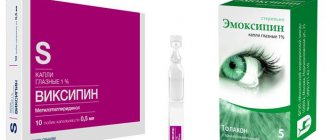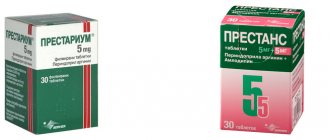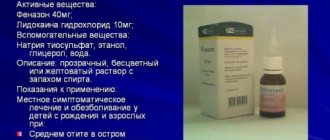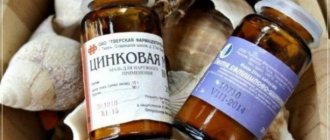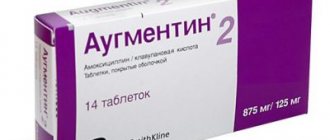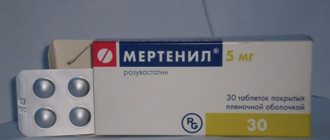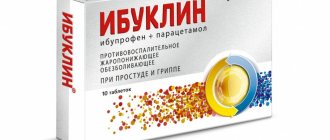Antibiotics have a dual effect on microbes: bactericidal and bacteriostatic . In the first environment, microbes simply cannot survive. In the second case, the statics of microbial development are disrupted, but diseased cells do not die. Medicines inhibit their development, and then the body’s immune system defeats them on its own.
Antibiotics come in broad and narrow spectrum. The doctor prescribes the patient to take a wide range of medications if the diagnosis of the disease is not completely clear. If the doctor is confident in the diagnosis, he prescribes narrow-spectrum complexes that specifically affect certain microorganisms.
Description of the drug
Suprax is a modern cephalosporin antibiotic. Used in the treatment of complex infections caused by gram-negative or gram-positive bacteria, as well as aerobic or anaerobic microorganisms. Shown to be effective against streptococcus and staphylococcus.
Produced in the form of capsules and suspensions. Both dosage forms of Suprax have the antibiotic cefixime as the main active ingredient.
Capsules contain 400 mg of the medicinal component. Excipients include silicon dioxide, azorubine, magnesium stearate, and cellulose. Sold 6 pieces in a cardboard box containing instructions.
Patients aged 6 months to 12 years need to purchase the medicine in powder form to make a suspension themselves. 5 ml of the finished medicine contains 100 mg of cefixime. The cardboard box contains one 60 ml bottle of white or slightly cream-colored powder, instructions for preparing the liquid form and a dosing syringe. The suspension additionally includes: sodium benzoate, xanthan gum, sucrose and flavoring.
What do medications have in common?
The two complexes are analogues of each other and belong to the same pharmacological group of drugs. They both have a bactericidal effect on the body and promote healing.
The drugs are based on the active substance cefixime . Also, the dosage of the medications is the same. The drugs are used in a dosage not exceeding 400 mg per day. The prescriptions are taken in a course over the course of a week. The duration of admission may be increased by the attending physician. If the functioning of the urinary tract and kidneys is impaired, the dosage of the drug is reduced.
When is Suprax prescribed?
This antibiotic is prescribed for:
- Infectious lesions of the ENT organs (sinusitis, inflammatory processes in the pharynx, tonsillitis, frontal sinusitis, otitis media);
- mild infections of the urinary system (inflammation of the bladder or kidneys);
- infections localized in the lower respiratory tract (bronchi, lungs);
- bacterial damage to the skin and soft tissues;
- osteomyelitis;
- Lyme disease;
- endometritis and gonorrhea.
Indications
Suprax is intended for the treatment of infectious and inflammatory processes caused by bacteria that are sensitive to cefixime. Therefore, before starting treatment, it is necessary to undergo tests to determine the causative agent of the infection. Thus, Suprax is used for the following diseases:
- infections of the nasopharynx and upper respiratory tract (sinusitis, acute pharyngitis, agranulocytic tonsillitis, chronic pharyngitis, sinusitis, tonsillitis);
- infections of the lower respiratory tract (acute and chronic bronchitis of bacterial origin, pneumonia);
- otitis media;
- uncomplicated urinary tract infections (cystitis, urethritis, pyelonephritis);
- uncomplicated gonorrhea (cervical, urethral);
- shigellosis.
How to take Suprax
The medicine is taken orally, regardless of meals, with a sufficient amount of water. Adult patients and children over 12 years of age who weigh more than 50 kg are prescribed capsules. Dosage – 400 mg once a day, it is important to take it at the same time. The duration of treatment is from 7 to 10 days, depending on the severity of the condition and the causative agent of the disease.
If the patient is diagnosed with kidney problems, the dose is reduced by ¼.
For uncomplicated gonorrhea, one 400 mg capsule is recommended.
Suprax suspension for children from 6 months to 12 years is prescribed based on the calculation:
- 8 mg of cefixime per 1 kg of child’s weight, given once a day;
- 4 mg of cefixime per 1 kg, but taken twice a day with an interval of 12 hours.
Thus, children are prescribed the following daily volumes of suspension depending on age:
- 6 months-1 year: 2.5-4 ml;
- 2-4 years: 5 ml;
- 5-11 years: 6-10 ml.
Suprax in the treatment of acute purulent pathology of ENT organs
Gurov A.V.
Acute purulent-inflammatory diseases of the middle ear and paranasal sinuses occupy a leading position in the world in terms of prevalence among diseases of the ENT organs. The main causative agents of these diseases are bacteria, among which the main ones found in the vast majority of cases are pneumococcus (Streptococcus pneumoniae) and Haemophilus influenzae. Moraxella (M. catarrhalis), as well as group A β-hemolytic streptococcus (GABHS) S.?pyogenes, are much less commonly isolated. When treating such conditions, the question of choosing an antibacterial drug always arises.
The problem of choosing the optimal antibiotic in the treatment of patients with acute purulent-inflammatory pathology of the ENT organs presents certain difficulties due to the dynamic change in the spectrum of pathogens against the background of their resistance to previously used drugs, which complicates the development of recommendations for prescribing the drug. In each specific case, it is necessary to take into account information about the patient and the characteristics of the prescribed drug: spectrum of action, bioavailability, optimal therapeutic dose and frequency of administration.
Unfortunately, traditional treatment regimens, used by doctors in otorhinolaryngological practice for decades, often do not meet modern requirements of clinical microbiology, do not take into account data on the natural sensitivity of microorganisms to antibiotics, and lead to the initiation of processes of secondary resistance to antibacterial drugs. All this, in turn, leads to the formation and persistence of multiresistant strains of microorganisms that have acquired selective advantages over other strains of bacteria. The consequence of this persistence is the formation of protracted acute and chronic forms of infections of the ENT organs, the treatment of which is extremely difficult.
Of particular importance is the choice of antibiotic at the prehospital stage during the patient’s initial visit to an otorhinolaryngologist. Carrying out antibiotic therapy on an outpatient basis is an extremely important task, since the irrational choice of a “starting” antibiotic prolongs the course of the infectious process and can contribute to the development of superinfection, complications, the need for an additional course of treatment and hospitalization. That is why outpatient antibiotic therapy requires timely prescription of an antibacterial drug, empirical selection of an antibiotic taking into account the expected microflora, determination of the optimally effective route of administration of the antibiotic into the body, as well as timely assessment of the clinical effectiveness of the prescribed antibacterial drug after 48 hours with a decision on whether to continue treatment with the selected drug if it is effective or replacing with an alternative antibiotic if there is no effect.
One of the basic principles of outpatient antibacterial therapy is the prescription of tableted antibacterial drugs and the reserving of forms for parenteral administration for use in a hospital setting. The results of numerous clinical trials performed abroad and in our country have proven the high effectiveness of treatment of mild and moderate purulent-inflammatory ENT diseases with oral forms of modern antibiotics. It was with the advent of such antibacterial drugs, with pharmacokinetic parameters not inferior to injectable forms, with a bioavailability reaching 80–95%, that it became possible to replace the traumatic parenteral route of drug administration with gentle forms of treatment. The use of oral antibiotics removes the relevance of the issues of post-injection infiltrates and abscesses, the danger of infection with hepatitis, AIDS and other infections, and allows for a serious economic effect in treatment.
In otorhinolaryngological practice, the main drugs for the correction of acute purulent-inflammatory diseases in outpatient settings are tableted β-lactam antibiotics (β-lactams) - the most widely represented group of modern antibacterial drugs, including a significant number of natural and semi-synthetic compounds, a characteristic feature of each of which is heterocyclic ?-lactam ring. These drugs include natural and semi-synthetic penicillins and cephalosporins.
The targets for β-lactam antibiotics are the so-called penicillin-binding proteins—transpeptidases of prokaryotic cells, which determine the process of cross-linking of heteropolymer chains of peptidoglycan, the most important structural component of the cell wall of prokaryotes. Due to inactivation of transpeptidases, the assembly of a complete cell wall becomes impossible, and the cell is lysed under excess osmotic pressure of the cytoplasm.
The most common drugs for the treatment of acute purulent-inflammatory otorhinolaryngological pathology are aminopenicillins, which were artificially created by modifying the molecule of natural penicillins. Aminopenicillins occupy one of the first places among all antibacterial drugs in terms of frequency of use both in otorhinolaryngological practice and in other branches of medicine. Active against streptococci, pneumococci, gram-negative cocci (gonococcus, meningococcus), as well as some anaerobes. Inactive against enterococci. Most strains of staphylococci (85–95%) currently produce β-lactamases and are resistant to the action of natural penicillins.
Aminopenicillins are characterized by a wide spectrum of antimicrobial action. Active against those microbes that natural penicillins act on (more active against enterococci, less active against streptococci and pneumococci), not active against staphylococci that produce β-lactamases. Aminopenicillins are also highly active against some gram-negative bacteria, mainly the intestinal group: Escherichia coli, Proteus, Salmonella, Shigella, and Haemophilus influenzae. An important disadvantage of classical aminopenicillins is the lack of activity against strains that produce β-lactamases. In particular, gram-negative microorganisms – H. influenzae, M. catarrhalis – have a pronounced ability to produce β-lactamases. That is why protected aminopenicillins are now widely used, blocking the action of bacterial enzymes that destroy the structure of the antibiotic.
However, although aminopenicillins are traditionally considered as drugs of the first group for the treatment of acute purulent-inflammatory pathology of the ENT organs, one should also not forget about cephalosporins, which are not much different in principle, and in some respects they are superior to penicillins.
Cephalosporins, along with penicillins, rightfully occupy a leading place in clinical practice. The popularity of these antibiotics is explained by the presence of many positive qualities, including: a wide spectrum of antimicrobial action, a bactericidal mechanism of action, better protection of drugs from β-lactamases compared to some other groups of antibacterial agents, good tolerability and a low frequency of side effects, simplicity and ease of dosing. Cephalosporins are mainly drugs for parenteral use and are widely used in hospitals to treat various infections, occupying one of the leading places among the antibiotics used. However, in recent years, cephalosporins have become available exclusively for oral use.
Taking into account the bacterial spectrum of acute purulent-inflammatory pathology of the ENT organs, in this article I would like to dwell on the drug Suprax.
Suprax (cefixime) is an effective and safe oral semisynthetic antibiotic from the group of third-generation cephalosporins of the aminothiazole group, which was synthesized in 1987 by . (Osaka, Japan). Currently, it is successfully used in more than 80 countries around the world. Before the advent of Suprax, the cefixime molecule was not represented on the Russian market, so Suprax has no direct competitors in Russia.
Cefixime is a highly effective and safe drug when used in children from 6 months of age. It is characterized by a wide spectrum of action and high activity against gram-positive cocci: Streptococcus spp. (except Enterococcos spp. and Staphylococcus spp.). Suprax is active against N.?gonorrhoeae, Moraxella catarrhalis, Haemophilus influenzae, including β-lactamase-forming ones, while H.?influenzae strains resistant to aminopenicillins and first-generation cephalosporins are also sensitive to Suprax. The drug also has activity against a wide range of microorganisms representing the Enterobacteriaceae family. Suprax has a bactericidal effect, the mechanism of which is due to the inhibition of peptidoglycan synthesis in the cell membrane of the pathogen. The drug is resistant to the action of β-lactamases produced by most gram-positive and gram-negative bacteria. The value of its minimum inhibitory concentration (MIC) for most microorganisms coincides with the minimum bactericidal concentration (MBC). The antibiotic is resistant to the hydrolytic action of broad-spectrum β-lactamases. Intended for oral use, characterized by moderately prolonged pharmacokinetics.
When taken orally, the bioavailability of the drug is 50%, regardless of food intake, and the maximum concentration is reached after 4 hours. However, when Suprax is taken with food, the maximum concentration of the drug is achieved 0.8 hours faster. In the blood, more than half (65%) of the drug is bound to albumin. About 50% of the dose is excreted unchanged in the urine within 24 hours, about 10% of the prescribed dose is excreted in the bile. The half-life depends on the dose and ranges from 3 to 4 hours. In patients with impaired renal function (creatinine clearance 20-40 ml/min.), the half-life increases to 6.4 hours, with creatinine clearance 5-10 ml/min. – up to 11.5 hours
Cefixime was studied in most detail in Japan at the stage of pre-marketing trials in various study plans (double-blind, comparative and non-comparative studies, etc.) with an assessment of the effectiveness and tolerability of the drug in various nosological forms of infections, mainly in infections of the upper and lower respiratory tract, both complicated and uncomplicated. These data served as a basis for the indications for the use of cefixime, recommendations for doses and dosage regimens, and made it possible to establish tolerability under various administration regimens, symptoms, severity and frequency of adverse reactions and their prevention.
In studies conducted in vivo, the distribution of cefixime in tissues and body fluids was studied, obtaining material for research during surgical interventions. Thus, when studying the level of concentrations of cefixime in the mucous membrane of the tonsils after taking 100 mg of the drug orally, its concentrations ranged from 0.4 to 0.85 mg/l and from 0.5 to 1.05 mg/l in the mucous membrane of the maxillary sinus . In children (21 observations), the concentration of the drug in the tissue 5 hours after 3 doses of 4 mg/kg was 0.5–0.74 mg/kg in the tissues of the tonsils. The concentration of cefixime in sputum 6–8 hours after a single dose of 100 mg was 0.04–0.16 mg/l; in the discharge of the middle ear - from 0.09 to 1.46 mg/l.
Good bioavailability and the ability to create effective concentrations in the blood and foci of inflammation suggest that the use of Suprax in otorhinolaryngological practice will significantly reduce the duration of purulent-inflammatory pathology and prevent their transition to a chronic disease.
In studies by England JK et al. and Iravani A. et al. (1988) conducted a comparative study of the effectiveness of cefixime and amoxicillin in patients with uncomplicated infections. A comparison of the effectiveness of cefixime, prescribed 400 mg once a day, and amoxicillin, 250 mg 3 times a day, was carried out in 192 patients with acute purulent-inflammatory diseases. Based on the studies carried out, almost complete identity of the compared schemes was obtained. Positive results were obtained in 90 and 89% of those taking cefixime and amoxicillin, respectively. Clinical cure was detected in 90% of patients treated with cefixime, and in 83% with amoxicillin. The isolated pathogens were sensitive to both drugs. Eradication of the pathogen was achieved in 92% of patients treated with cefixime and in 84% with amoxicillin. The incidence of adverse reactions was approximately equal in both compared groups. Treatment with both drugs provided similar positive dynamics in the course of the inflammatory process, assessed by subjective and objective signs. And at the same time, the higher compliance of cefixime (once daily dosage) determined its advantages in the treatment of purulent-inflammatory diseases.
According to the Department of Medicine and Clinical Pharmacology, Peterfy Teaching Hospital, Hungary, the effectiveness of Suprax treatment for purulent-inflammatory diseases of the ENT organs when taken once a day was 92.6% in patients with acute tonsillopharyngitis, 97.8% in patients suffering from acute purulent sinusitis, and 96.0% in patients with acute purulent otitis media.
The drug Suprax (cefixime) is prescribed to adults and children over 12 years of age weighing more than 50 kg at a daily dose of 400 mg (once a day or 200 mg twice a day). Children aged 6 months and older. up to 12 years of age, the drug is prescribed in the form of a suspension at a dose of 8 mg/kg body weight 1 time per day or 4 mg/kg every 12 hours. The duration of treatment depends on the severity of the disease and is determined individually. For infections caused by Streptococcus pyogenes, the course of treatment should be at least 10 days. In case of impaired renal function (with CC 21–60 ml/min) or in patients on hemodialysis, the daily dose should be reduced by 25%.
Side effects when taking Suprax are quite rare and are associated mainly with individual hypersensitivity to the drug, as well as with an allergy to β-lactam antibiotics. The drug is safe for use in pregnant women and children over 6 months.
Thus, Suprax (cefixime) is the drug of choice for the treatment of acute purulent-inflammatory pathology of the ENT organs and, in fact, the only third-generation cephalosporin for oral administration on the domestic pharmaceutical market, which creates “inpatient” conditions for treating a patient at home.
Literature
1. N.D. Soroka, T.G. Vlasova. Oral cephalosporins in the treatment of lower respiratory tract infections in children: experience with the drug Suprax (cefixime). Antibacterial therapy in pediatrics. Volume 06/N 2/2004.
2. I.P. Fomina, L.B. Smirnova, Current significance of the third generation oral cephalosporin cefixime in the treatment of bacterial infections, Infections and antimicrobial therapy, Volume 04/N 3/2002.
3. Kinoshita H, Baba S, Mori Y et al. Chemother 1985; 33(Suppl. 6): 817 –27.
4. Kawamura S, Fujimaki Y, Sugita R et al. Tissue distribution and clinical results with cefixime for ENT infections workshop. 15th Internal Congress of Chemotherapy Advances of Experimental Clinical Chemother 1988; 1:24–32.
5. England JK, Bauernfeind A, Levenstein J et al. A multicentre randomized comparison of cefixime versus co-trimoxazole in uncomplicated urinary tract infections. Workshop 15th International Congress of Chemotherapy. Advances in experimental and clinical chemotherapy 1988; 53 –60.
6. Iravani A, Richard GA, Johnson D et al. Am J Medicine 1988; 85 (Suppl. 3A): 17 –85.
7. Ludwig E., Thege MK, Arr M., Kovacs G. Resistance of some selected pathogens to antimicrobials in Hungary International Journal of Antimicrobial Agents, Volume 6, Number 2, December 1995, pp. 99–102(4)
How to prepare a suspension
To prepare the liquid form of the medicine, you must follow the instructions for the Suprax suspension:
- Shake the bottle to agitate the contents.
- In two stages, add 40 ml of boiled water at room temperature to the powder.
- Shake the contents thoroughly after each addition of water.
- Allow the suspension to stand for at least 5 minutes until the granules are completely dissolved.
The contents of the bottle must be shaken before each use.
Is Suprax allowed for pregnant women and children?
During the period of bearing a child, the antibiotic Suprax is prescribed only by a doctor if the benefits of use exceed all possible risks for the development of the fetus. If treatment with the drug is necessary during lactation, breastfeeding should be suspended.
Suprax suspension is actively used in the treatment of children over 6 months of age. Indicated for serious infections, as well as when milder antibiotics are ineffective. Capsules are contraindicated for children under 12 years of age.
Doctors' opinion
Dmitry, therapist, 54 years old, Novosibirsk: “Both drugs are effective for bronchitis and pneumonia. Side effects are possible. More often, the gastrointestinal tract reacts negatively to antibiotics. The downside of the drugs is the cost that many patients cannot afford.”
Irina, gynecologist, 39 years old, Kaliningrad: “The antibiotic Suprax is effective in the treatment of genitourinary infections. It is well tolerated, patients rarely complain of side effects if the dosage is chosen correctly. I prescribe with caution to pregnant women.”
Contraindications and side effects
Suprax is contraindicated in case of individual intolerance to the components and hypersensitivity to penicillin, as well as in infants under 6 months.
With special attention, this antibiotic is used to treat elderly patients, as well as people with renal failure and colitis.
The drug has an impressive list of possible negative manifestations:
- allergic reaction (in the form of urticaria, itching, Quincke's edema, anaphylactic shock);
- disruptions in the gastrointestinal tract (loose stools, constipation, enterocolitis, attacks of nausea and vomiting);
- the appearance of pain in the head, dizziness, ringing in the ears;
- changes in the functioning of the hematopoietic system (decrease in platelets, leukocytes, hemoglobin, bleeding);
- disorders of the kidneys;
- vaginitis
Side effects
During therapeutic treatment, Suprax may cause the following side effects:
- Allergic reactions: skin itching, skin flushing, eosinophilia, fever, urticaria, erythema multiforme, anaphylactic shock, toxic epidermal necrolysis, reactions resembling serum sickness.
- From the digestive system: dry mouth, anorexia, diarrhea, nausea, vomiting, abdominal pain, flatulence, transient increase in the activity of liver transaminases and alkaline phosphatase, hyperbilirubinemia, jaundice, gastrointestinal candidiasis, dysbacteriosis; rarely – stomatitis, glossitis, pseudomembranous enterocolitis.
One of the side effects of the drug is abdominal pain.
- From the hematopoietic system: agranulocytosis, neutropenia, thrombocytopenia, leukopenia, pancytopenia, bleeding, hemolytic and aplastic anemia.
- From the reproductive system: genital itching, vaginitis.
- From the urinary system: interstitial nephritis.
- From the nervous system: tinnitus, headache, dizziness, convulsions.
- Other: shortness of breath, candidomycosis;
Typically, these adverse reactions do not appear clearly enough and are mild. Therefore, in most cases, treatment cessation is not required.
special instructions
For patients suffering from diabetes, it is important to take into account the presence of sucrose in the suspension (20 ml contains 15 g). During antibiotic treatment, you must refrain from drinking alcoholic beverages.
If the patient has an allergic reaction to penicillin, then Suprax 400 mg should be taken with caution according to the instructions.
With an overdose of an antibiotic, there is an increase in side effects. In this case, gastric lavage, taking antiallergic drugs, and in severe cases mechanical ventilation and dialysis are indicated.
What do they have in common and how do they differ?
The table below shows the most important criteria by which the drugs Suprax and Pancef are similar. As well as their distinctive features.
| A drug | Active substance | Release form | Price | Indications | Manufacturer |
| Suprax | Cefixime | Suspension 60 ml Capsules pills | 580-600 rub. 700-800 rub. 780-850 rub. | similar | Jazira Pharmaceutical Saudi Arabia / Hikma Pharmaceuticals (Jordan) |
| Pantsef | Cefixime | Suspension 60/100 ml Tablets | 350-400 rub. 530-570 rub. 450-540 rub. | similar | ALKALOID JSC, Republic of Macedonia |
Among other things, the package with granules for preparing the Suprax suspension contains a 5 ml measuring spoon, and the Pancef package contains a measuring cup, which in practice turns out to be more convenient.
